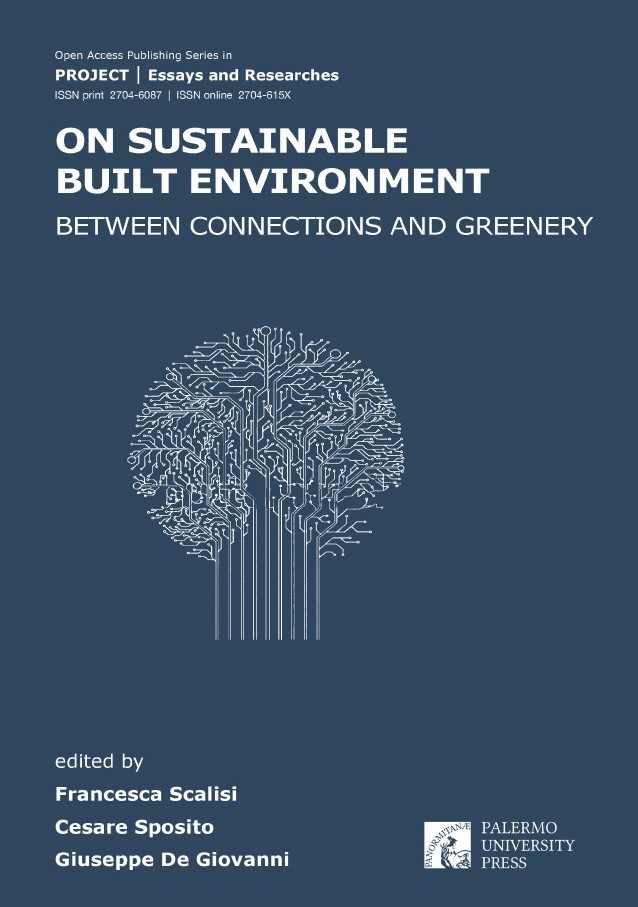
Title
Digital design, technology and sustainable impact. From apparent contradiction to strong coalition
DOI
doi.org/ 10.19229/978-88-5509-446-7/7162022
Keywords
digital sustainability, smart system, co-design, collaborative platform, service design
Abstract
Design, through its ability to predict future scenarios, has the role of meeting the challenges posed by current digitization in relation to the apparent dichotomy with the sustainable dimension. This aspect is explored in the article through the analysis of the SMAG and COLUX projects. The first develops a product-service system equipped with an advanced technological set-up capable of controlling the vital parameters of green spaces. The second designs an innovative platform for creating virtual environments for co-designing products and living spaces using AR and VR. The main focus of the projects concerns the innovation of the design/management process in real time of the services through direct comparison with the actors involved in a perspective of environmental, economic and social sustainability. Such research emphasizes the importance of the repercussions of digitization and the role of design in a ‘digicircular’ transformation framework aimed at increasingly sustainable practices.
Section
Design | Research & Experimentation
pp. 288-305
Author(s)
Irene Fiesoli, Eleonora D’Ascenzi
Author(s) Biography
Irene Fiesoli is a Designer and a Research Fellow at the Department of Architecture of the University of Florence (Italy). She completed her PhD in Architecture (curriculum Design) at the University of Florence and she is involved in research activities at the Design Sustainability Lab, specializing in the sectors of Industry 4.0, Strategic Design for territorial systems, and Digital Design. Mob. +39 329/15.79.201 | E-mail: irene.fiesoli@unifi.it
Eleonora D’Ascenzi, Architect, is a PhD Candidate at the Department of Architecture of the University of Florence. She pursued a Research Master at the University of New South Wales and she is currently collaborating with the Design Sustainability Lab at the University of Florence. Her fields of interest are related to virtual reality, industry 4.0, user experience, and neuro-architecture. Mob. +39 346/01.611.87 | E-mail: eleonora.dascenzi@unifi.it
References
Covato, V. (2020), “Vi spiego l’impatto del Covid-19 sulle professioni – L’analisi di Fadda (Inapp)”, in Formiche.net, 18/04/2020. [Online] Available at: formiche.net/2020/04/professioni-impatto-covid-19-fadda-inapp/ [Accessed 14 May 2022].
Dellink, R., Arriola, C., Bibas, R., Lanzi, E. and van Tongeren, F. (2021), The long-term implications of the Covid-19 pandemic and recovery measures on environmental pressures – A quantitative exploration, OECD Environment Working Papers, n. 176, OECD Publishing, Paris. [Online] Available at: doi.org/10.1787/123dfd4f-en [Accessed 14 May 2022].
Epifani, S. (2020), Sostenibilità digitale – Perché la sostenibilità non può fare a meno della trasformazione digitale, Digital Transformation Institute, Rome.
Errante, L. (2021), “Hybrid communities and resilient places – Sustainability in a post-pandemic perspective”, in Sposito, C. (ed.), Possible and Preferable scenarios of a sustainable future – Towards 2030 and beyond, Palermo University Press, Palermo, pp. 32-45.
[Online] Available at: doi.org/10.19229/978-88-5509-232-6/522021 [Accessed 14 May 2022].
European Commission (2019), The European Green Deal, document 52019DC0640, 640 final. [Online] Available at: eur-lex.europa.eu/legal-content/EN/TXT/?uri=COM%3A2019%3A640%3AFIN [Accessed 14 May 2022].
Franco, S. and Nuccio, M. (2021), Trasformazione digitale e sostenibile – Una prospettiva di Management,Giappichelli Editore, Torino.
Formia, E., Ginocchini, G. and Ascari, M., (2021), “Attivare processi di empowerment dei cittadini – I dati per leggere bisogni individuali e collettivi della società”, in MD Journal, vol. 11, pp. 52-61. [Online] Available at: mdj.materialdesign.it/index.php/mdj/article/view/205 [Accessed 14 May 2022].
Istat (2021), Rapporto sul territorio 2020 – Ambiente, economia e società. [Online] Available at: istat.it/storage/rapporti-tematici/territorio2020/Rapportoterritorio2020.pdf [Accessed 14 May 2022].
Marseglia, M. (2020), “SMAG – Smart Garden”, in Lotti, G., Impresa 4.0 / Sostenibilità / Design – Ricerche e progetti per il settore Interni, FrancoAngeli, Milano, pp. 216-229.
OECD – Organisation for Economic Co-operation and Development (2007), Annual Report 2007. [Online] Available at: oecd.org/newsroom/38528123.pdf [Accessed 14 May 2022].
Pihkala, S. and Karasti, H. (2018), “Politics of mattering in the practices of participatory design”, in Proceedings of the 15th Participatory Design Conference – Short Papers, Situated Actions, Workshops and Tutorial, vol. 2, pp. 1-5. [Online] Available at: doi.org/10.1145/3210604.3210616 [Accessed 14 May 2022].
Polifroni, M. (2021), Ambiente, Pandemie, Economie & Aziende – Alla ricerca della ‘vocazione sociale’ dell’azienda resiliente, Giappichelli Editore, Torino.
Ratti, C. and Claudel, M. (2018), La città di domani – Come le reti stanno cambiando il futuro urbano, Einaudi, Torino.
Rossato, L. and Raco, F. (2017), “Tecnologie virtuali per il concept design – La rappresentazione digitale del progetto di processi e prodotti”, in MD Journal, vol. 4, issue 2, pp. 160-169. [Online] Available at: mdj.materialdesign.it/index.php/mdj/article/view/109 [Accessed 14 May 2022].
Socco, C., Cavaliere, A., Guarini, S. M. and Montrucchio, M. (2005), La natura nella città – Il sistema del verde urbano e periurbano, FrancoAngeli, Milano.
United Nations (2015), Transforming our world – The 2030 Agenda for Sustainable Development. [Online] Available at: un.org/ga/search/view_doc.asp?symbol=A/RES/70/1&Lang=E [Accessed 14 May 2022].
Urban, W., Krawczyk-Dembicka, E. and Łukaszewicz, K. (2022), “Product Co-design Supported by Industry 4.0 in Customized Manufacturing”, in Trojanowska, J., Kujawińska, A., Machado, J. and Pavlenko, I. (eds), Advances in Manufacturing III – MANUFACTURING 2022 – Lecture Notes in Mechanical Engineering, Springer, Cham, pp. 186-199. [Online] Available at: doi.org/10.1007/978-3-030-99310-8_15 [Accessed 14 May 2022].
Venkat Ramaswamy, C. K. P. (2004), “Co-creation experiences – The next practice in value creation”, in Journal of Interactive Marketing, vol. 18, issue 3, pp. 5-14. [Online] Available at: doi.org/10.1002/dir.20015 [Accessed 14 May 2022].
von der Leyen, U. (2020), State of the Union Address by President von der Leyen at the European Parliament Plenary, State of the Union 2020, Brussels. [Online] Available at: ec.europa.eu/commission/presscorner/detail/ov/SPEECH_20_1655 [Accessed 14 May 2022].
Wang, X. and Schnabel, M. A. (eds) (2008), Mixed reality in architecture, design, and construction, Springer, Dordrecht. [Online] Available at: doi.org/10.1007/978-1-4020-9088-2 [Accessed 14 May 2022].
Zhang, Y., Liu, H., Kang, S. C. and Al-Hussein, M. (2020), “Virtual reality applications for the built environment – Research trends and opportunities”, in Automation in Construction, vol. 118, art. 103311. [Online] Available at: doi.org/10.1016/j.autcon.2020.103311 [Accessed 22 May 2022].
Zurlo, F. (2012), Le strategie del design – Disegnare il valore oltre il prodotto, Libraccio editore, Milano.
